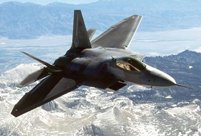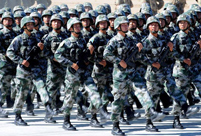 YOG kicks off in Nanjing
YOG kicks off in Nanjing
 Colorful life at Youth Olympic Village of Nanjing 2014 YOG
Colorful life at Youth Olympic Village of Nanjing 2014 YOG
 Royal Taoist temple to open to public
Royal Taoist temple to open to public
 Female soldiers at quake-hit area
Female soldiers at quake-hit area
 Shocking photos of cruel battles in Ukraine
Shocking photos of cruel battles in Ukraine
 Amphibious armored vehicle unit conducts open sea drill
Amphibious armored vehicle unit conducts open sea drill
 Water relay in Henan
Water relay in Henan
 Ethnic culture feasts eyes of travelers
Ethnic culture feasts eyes of travelers
 80 security dogs assembled in Nanjing police dog training base
80 security dogs assembled in Nanjing police dog training base
 Graffiti artists paint on street walls in Xinjiang
Graffiti artists paint on street walls in Xinjiang
China and the US started a two-day meeting at the Pentagon on Wednesday to negotiate a code of conduct on the high seas, in the wake of a Chinese fighter jet intercepting a US spy plane near the Hainan Island. Although the meeting was set up before this incident, it is believed the near-miss will make a difference during the negotiations.
Given the fact that Washington's determination to continue its short-range surveillance of China is as strong as China's commitment to drive US planes away, whether the 2001 mid-air collision could recur has become a Sword of Damocles above their heads.
The new strategic trajectory of Asia-Pacific, namely China is growing stronger and a containment circle drawn by the US and its allies is taking shape, is changing the mindsets of both sides to define specific conflicts. If the 2001 incident happened again, the possibility of an all-out crisis between both sides will increase.
China's rise is increasing the odds that China and the US are sliding into "mutual distrust." A feasible way to avoid such a crisis is that both sides should reduce the chances that their vessels and planes engage in confrontation in international seas and airspace.
As of now, the confrontations usually happen in Chinese coastal waters and air spaces. The US takes it for granted, but China feels its core interests are being challenged.
There are two ways to address this kind of disputes: Washington withdraws its surveillance to an extent that China can accept, or China develops its surveillance technology and starts military reconnaissance near US territories. The latter option has become increasingly possible as China's military technologies are advancing.
There is no doubt that Washington will find more evidence to prove that China and the US can only be adversaries, and it is possible that more conflicts will make both sides lose control of the situation. But China has no choice if Washington doesn't restrain itself.
It seems that both China and the US are willing to build a strategic mutual trust, but the communication mechanisms are not working well.
The US says it has no plan to contain China, and China also says it has no intention to drive US out of Asia. But the US wants to maintain its absolute superiority in strength, and China is sparing no effort to bridge the gap.
Thus, it is hard for Washington and Beijing to reach a consensus on this issue, and they have to get used to each other.
But Washington must note that making troubles on China's doorstep can only stir up China's determination to defend its legitimate interests. In this regard, the US is much less determined than China.
China can put up a tough stand against the US in this short-range surveillance matter, and develop its capability to conduct such surveillance to the US as soon as possible, as long as China will not threaten the national security of the US.
 Special holidays
Special holidays World's top 10 fighters
World's top 10 fighters 'Stewardesses' serve in hospital
'Stewardesses' serve in hospital Beautiful night scenery of Nanjing
Beautiful night scenery of Nanjing ‘Peace Mission -2014’ joint anti-terror military exercise kicks off in China
‘Peace Mission -2014’ joint anti-terror military exercise kicks off in China Eye-catching guides at the opening ceremony of YOG in Nanjing
Eye-catching guides at the opening ceremony of YOG in Nanjing A female missile launch company of PLA
A female missile launch company of PLA China, the U.S., Britain and the Soviet Union call for Japan's unconditional surrender
China, the U.S., Britain and the Soviet Union call for Japan's unconditional surrender The biggest duty-free store of the world
The biggest duty-free store of the world Volunteers bid farewell to YOG
Volunteers bid farewell to YOG More police dogs join anti-terror campaign in Inner Mongolia
More police dogs join anti-terror campaign in Inner Mongolia Picturesque Dayilan Manchu village in NE China
Picturesque Dayilan Manchu village in NE China Athletes experience the charm of Chinese traditional opera in Nanjing
Athletes experience the charm of Chinese traditional opera in Nanjing Contestants for Miss Bikini World experience Chinese traditional culture
Contestants for Miss Bikini World experience Chinese traditional cultureDay|Week|Month